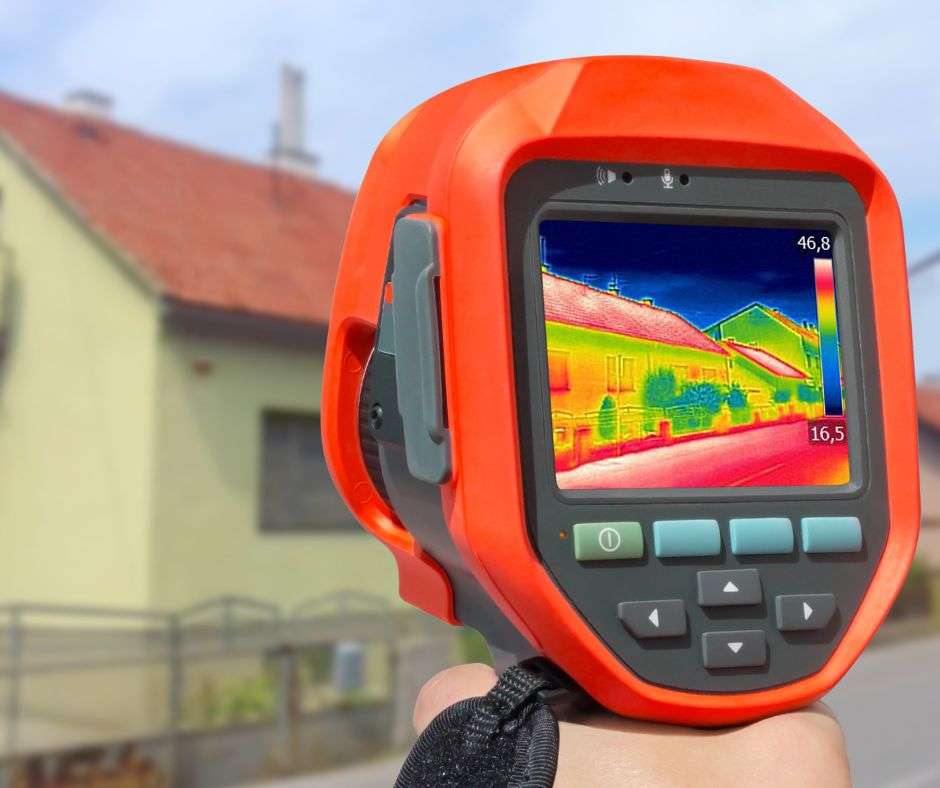Thermal infrared inspections are a valuable tool for building diagnostics that can quickly and accurately identify potential problems that can’t be seen by the naked eye. This non-invasive method utilizes a thermal-graphic camera to capture images that reveal temperature differences within a building’s structure, allowing inspectors to pinpoint areas of concern.
In this article, we’ll discuss the benefits of thermal infrared inspections, the technology behind it, and how it can be used for both residential and commercial inspections.
The Benefits of Thermal Infrared Inspections
Traditional inspection methods can be time-consuming and invasive, often requiring destructive probing methods that can damage the structure of a building. Thermal infrared inspections offer a non-invasive alternative that can quickly and accurately identify potential problems without causing damage.
By identifying areas of concern early on, thermal infrared inspections can help property owners save time and money by addressing problems before they become major issues. In addition, thermal infrared inspections can provide a unique advantage for property inspections, allowing inspectors to provide more accurate and comprehensive reports.
The Technology Behind Thermal Infrared Inspections
Thermal infrared inspections utilize a thermal-graphic camera to capture images that reveal temperature differences within a building’s structure. These cameras detect and record thermal radiation emitted by objects and convert it into an image that can be analyzed.
The images captured by thermal-graphic cameras are known as thermograms and are displayed in color-coded images that reveal temperature differences within a building’s structure. Hot spots are displayed in red, while cooler areas are displayed in blue. This allows inspectors to quickly identify potential problem areas and recommend appropriate actions.
Applications for Thermal Infrared Inspections
Thermal infrared inspections can be used for a variety of applications, including residential and commercial inspections. In residential inspections, thermal infrared inspections can identify energy loss due to poor insulation or air leaks, as well as moisture issues that can lead to mold growth.
In commercial inspections, thermal infrared inspections can identify electrical hot spots, leaky roofs, and insulation issues, among other potential problems. Thermal infrared inspections can also be used in industrial applications to identify overheating equipment, which can lead to costly downtime and repairs.
Choosing a Qualified Thermal Infrared Inspector
When choosing a thermal infrared inspector, it’s important to look for a qualified and experienced professional who is trained in the use of thermal-graphic cameras. Look for a professional who is certified and has experience in conducting both residential and commercial inspections.
In addition, a qualified inspector should provide a comprehensive report of their findings, including images captured during the inspection and recommendations for appropriate actions. They should also be available to answer any questions or concerns you may have about the inspection process and results.
Thermal Infrared Home Inspection
Thermal infrared inspections offer a non-invasive, accurate, and cost-effective method for building diagnostics. By identifying potential problems early on, property owners can save time and money on repairs and maintenance. When choosing a thermal infrared inspector, look for a qualified and experienced professional who can provide a comprehensive report of their findings and recommendations. With the right inspector, thermal infrared inspections can provide a valuable advantage for both residential and commercial inspections.










Leave A Comment
You must be logged in to post a comment.